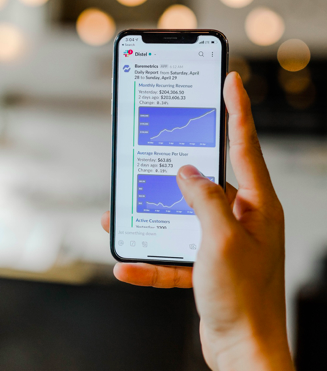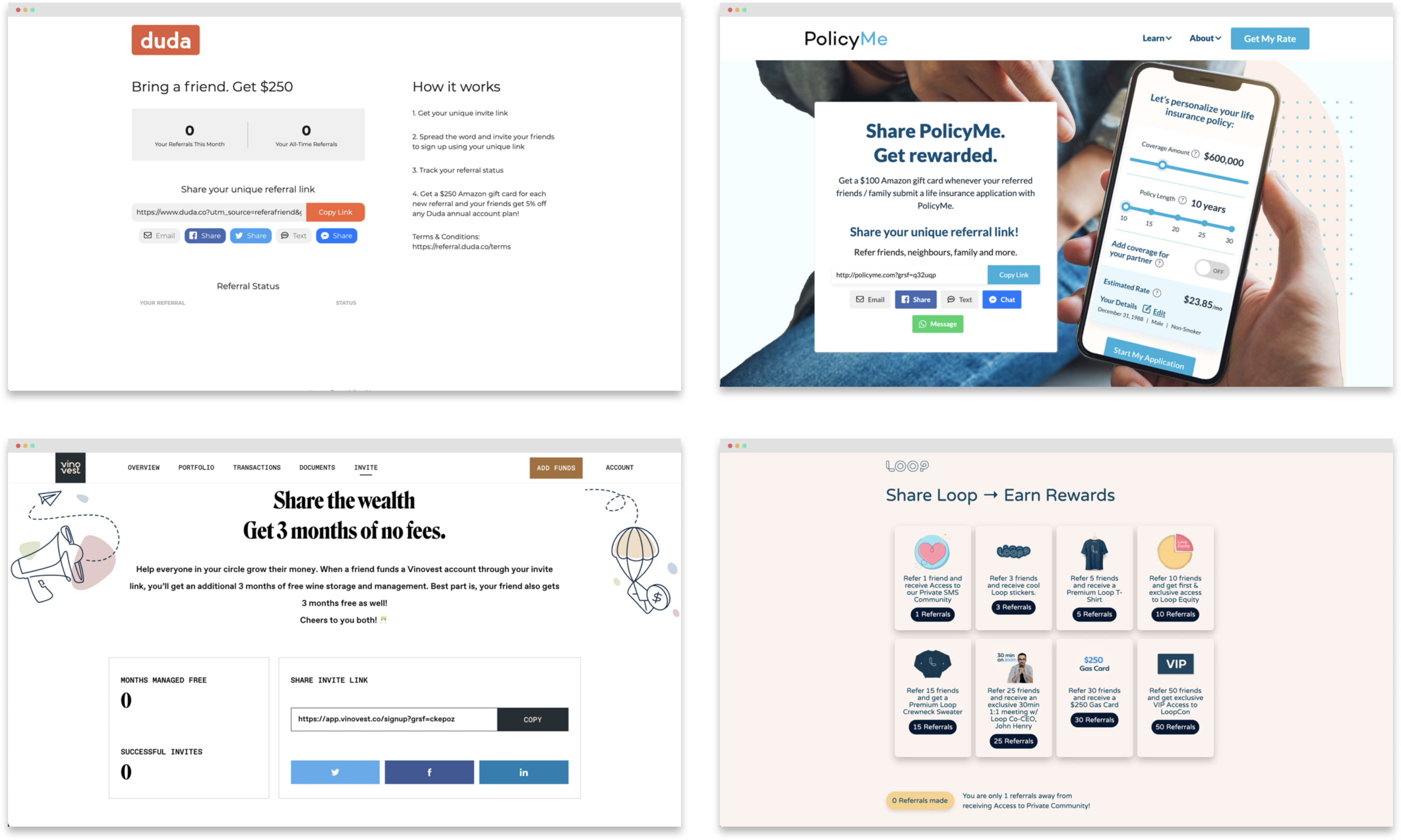If you operate in the Software-as-a-Service (SaaS) industry, you've already heard about churn. It's one of the 5 AARRR Pirate Metrics, after all. Churn, or customer attrition, refers to the number of customers who cancel their subscriptions or fail to renew over a given period. This article will provide an in-depth examination of what churn is, why it's a crucial metric for SaaS businesses, how it impacts your growth and profitability, and how to accurately measure and reduce churn as a SaaS provider.
What Is Churn?
Churn, also known as customer attrition or customer turnover, is the number or percentage of customers that leave your business or cancel their subscriptions over a given period of time. It's the opposite of customer retention and a key metric for subscription-based businesses like SaaS companies.
A high churn rate indicates that a large portion of your customer base is not deriving enough value from your product or service, which can severely impact your revenue growth and make it difficult to offset customer acquisition costs.
What Does Churn Rate Mean?
Your churn rate is a metric that examines the percentage of total customers that have canceled their subscriptions or the amount of recurring revenue lost over a specific time period. It calculates the rate at which customers have left the business versus the number of customers you retain or acquire.
There are different types of churn rates that SaaS businesses should track, including:
- Customer churn rate: The percentage of customers who canceled their subscriptions within a given period.
- Revenue churn rate: The percentage of recurring revenue lost from cancellations and downgrades.
- Gross MRR churn rate: The percentage of total monthly recurring revenue (MRR) lost from cancellations.
- Net MRR churn rate: The percentage of revenue churn after accounting for expansion revenue from upgrades.
Why Is Churn Important to SaaS Businesses?
In a SaaS business, churn is the percentage rate at which your customers cancel their recurring revenue subscriptions. Therefore, it is critical when forecasting to use your churn to determine the probability rate at which customers will cancel their subscriptions.
Looking at the definition of customer churn – the number of customers that cancel their recurring monthly subscription – your churned customers represent lost revenue and growth potential. A high churn rate can severely impact your ability to scale and achieve sustainable growth.
In other words, your churn rate is an important metric used to determine the overall health, profitability, and growth trajectory of your SaaS business. It directly affects key metrics like monthly recurring revenue (MRR), customer lifetime value (CLV), and customer acquisition cost (CAC) payback period.
According to Joel York of Chaotic Flow, "The reason the SaaS churn rate dominates over virtually all other SaaS metrics is that SaaS churn is in direct opposition to growth; the primary objective of most SaaS businesses. As the limiting factor to growth, the SaaS churn rate has a very negative impact on both SaaS profitability and SaaS company valuation."
Keeping track of your new AND lost customers is as vital as tracking new leads and referrals. It's much more expensive to acquire new customers than it is to retain existing customers, which is why businesses should endeavor to keep their churn rate as low as possible.
According to research by Bain & Company, increasing customer retention rates by just 5% can increase profits by 25% to 95%. This underscores the importance of churn reduction for improving profitability and ROI on customer acquisition spend.
At all stages, from the startup phase to growth and maturity, investors and stakeholders will closely examine your churn rate as it's a key indicator of your business' potential for long-term, sustainable growth. A low churn rate signals that your product delivers value and your business is operating efficiently.
What Is a Churn Analysis and Why Is It Important?
Businesses will regularly measure customer and/or revenue churn to determine how well they perform against operational goals or establish their financial health and forecasts. This measurement is known as a churn analysis. You can conduct a churn analysis retrospectively to understand historical performance or use it for forecasting future churn and revenue.
SaaS churn harms profitability and company valuation. Churn increases with the size of your customer base (known as negative virality), making it increasingly difficult to overcome as your business scales. It is a compounding problem, and when companies become aware of a downward growth trend driven by high churn, they need to take swift action to address the root causes.
According to Joel York of Chaotic Flow, "SaaS churn tends to follow a distribution where the bulk of customers fall off within one customer lifetime, but some customers hang around for a very long time." This underscores the importance of churn analysis to identify at-risk customer segments and take proactive steps to improve retention.
Startups spend a significant amount of money and time acquiring customers. Extending the lifetime value of your customer is the only way to recover that initial acquisition cost and achieve a positive ROI. If a customer brings on even more referral customers, their lifetime value increases exponentially.
Customer Lifetime Value (CLV or LTV) is calculated by dividing your average revenue per account by your churn rate. A lower churn rate translates to higher CLV and a higher business valuation multiple. Therefore, conducting regular churn analysis is crucial for understanding the key drivers of customer lifetime value and making data-driven decisions to optimize acquisition spend and improve retention.
According to Lincoln Murphy of Sixteen Ventures, "The lower your churn rate, the higher your customer lifetime value, and the more you can spend to acquire customers while still maintaining a positive ROI." This highlights why churn reduction should be a top priority for SaaS businesses.

Common Churn Metrics for Subscription Businesses
Before we can establish the churn rate formula you want to use for your business, we need to determine what you would like to measure.
Tracking your leads and conversions is part of the ten commandments of lead generation – and knowing how much revenue those leads and conversions will bring over time is a critical part of churn analysis.
Some of the most commonly used metrics include:
Logo Churn
Logo Churn is the number of subscribers that cancel or discontinue their subscription in a given period. Express it as a percentage as part of your Customer Lifetime Value calculation or as an absolute count.
In general, businesses aim to keep their logo churn rate below 3%, although it is much higher for small to mid sized enterprises.
You can calculate your logo churn by dividing your churned customers for a set period by the total number of customers at the beginning of this period.
Recurring Revenue (ARR/MRR) Churn
Your recurring revenue churn, also known as ARR (Annual Recurring Revenue) or MRR (Monthly Recurring Revenue) churn, is a ratio that measures the recurring revenue lost as a percentage of your total recurring revenue over a given period. This includes revenue lost from cancellations, downgrades, and any other attrition of paying customers.
You can calculate your Recurring Revenue Churn by dividing the sum of your downgraded MRR and canceled MRR by your total MRR at the beginning of the period.
Most companies aim for a gross MRR churn rate of 1-2% or less per month. High churn rates will eventually surpass your growth rate. At 5% monthly MRR churn, you would lose half of your subscription revenue over the course of a year, making it extremely difficult to sustain and scale your business.
According to David Skok of Matrix Partners, "For most SaaS companies, a sustainable churn rate for MRR is around 5% per year, or 0.42% per month." This highlights the importance of keeping revenue churn low to maintain a healthy growth trajectory.
Revenue Churn
Revenue churn, also known as GAAP revenue churn, is a metric similar to recurring revenue churn but encompasses the loss of both recurring and non-recurring revenue sources. It provides a more comprehensive view of your overall revenue attrition according to Generally Accepted Accounting Principles (GAAP) in the USA.
While recurring revenue churn focuses solely on subscription or SaaS revenue, revenue churn accounts for any income lost from one-time fees, professional services, and other non-recurring revenue streams. This makes it a valuable metric for businesses with diverse revenue models beyond just subscriptions.
Average Recurring Revenue Churn
This metric expresses the average Annual Recurring Revenue (ARR) or Monthly Recurring Revenue (MRR) decreased due to lost customers over a given period. It provides insight into the average revenue impact per churned customer.
Calculating average recurring revenue churn can help identify if you are losing a higher proportion of larger, more valuable customers versus smaller accounts. This can inform strategies to improve retention for different customer segments based on their subscription value.
Bookings Churn
Bookings churn is a more traditional but lesser-used metric for SaaS companies to measure churn. A booking refers to an executed contract between your business and a customer for a subscription product or service.
Because churn encompasses not only lost customers but also the net inflow and outflow of recurring revenue, bookings churn tracks changes in contract value from downgrades, upgrades, and renewals in addition to cancellations.
While bookings churn provides a comprehensive view of your recurring revenue health, it can be more complex to calculate and may not align as closely with your actual cash flows and recognized revenue under accounting standards like GAAP.

How to Calculate Churn Rate for Your SaaS Business
Several methods explore how to calculate churn rate, but you should meet the ideal SaaS churn calculation requirements to get an accurate picture, including:
- a uniform customer population that all have the same probability of canceling during the measurement period;
- a matched customer population, taking into account the clients that may cancel and the ones that do cancel;
- the correct measurement interval, ensuring that the period is long enough to be statistically viable;
- a stable business process, as startups may not have a recurring revenue stream yet.
Assuming that all of these ideal requirements are in place, there are two common ways of calculating churn:
The Simple Churn Calculation Method
Most companies start by calculating churn using this straightforward approach:
- Subtract the number of customers remaining at the end of the period from the number at the beginning
- Divide the result by the number of customers at the beginning of the period
- Multiply by the number of periods in a year to annualize the rate (e.g. 12 for monthly periods)
While simple to understand and calculate, this method doesn't account for real-world growth dynamics. If your total customer base grows significantly during the period, your churn rate will appear artificially lower – even if you lost more customers than the prior period.
This basic calculation can work reasonably well if your growth and subscription base are relatively stable and well-established. However, for businesses experiencing rapid scaling, a more advanced approach may be needed.
The Adjusted Churn Calculation Method
For businesses anticipating significant growth or fluctuations in their customer base, an adjusted churn calculation can provide a more accurate view. This approach takes the midpoint customer count for the period rather than starting at the beginning.
To calculate adjusted churn:
- Take the average of the starting and ending customer counts for the period
- Subtract the number of customers remaining at the end from this midpoint average
- Divide the result by the midpoint average customer count
- Annualize the rate if needed by multiplying by the number of periods in a year
This method helps normalize changes in your total customer base over the measurement period. However, it still doesn't perfectly account for varying churn patterns across different time windows like days, weeks, months, etc.
To gain a comprehensive understanding, it's advisable to calculate churn rates across multiple time periods and compare trends. This allows you to identify potential seasonality effects or other nuances in your churn behavior.
Common Pitfalls in Churn Calculation
Even the most straightforward churn calculation methods can provide valuable insights. However, watch out for the following common pitfalls that can skew your churn analysis:
Inappropriate Measurement Period Length
If you have a very small number of customers, an extremely low or high monthly churn rate, these could be signs that your measurement period length is problematic. Too short of a period may not capture enough churn data, while too long of a period can distort results.
As a general guideline from Joel York of Chaotic Flow, "When the churn rate is small, so many math things work out better for SaaS churn rate calculation accuracy... Consider a measurement interval where the total churn within the interval is small, ideally less than 10%."
Mismatched Customer Populations
If you have a mix of contract renewal periods (monthly, annually, etc.), significantly longer contracts than your measurement period, or a very high monthly growth rate, the population you are measuring is likely skewing your churn calculation.
It becomes increasingly difficult to measure accurate churn rates when you have different customer segments exhibiting varied behaviors and churn patterns. For example, having a blend of loyal long-term customers, early dropouts, high-value enterprise accounts on multi-year contracts, and small businesses on month-to-month subscriptions.
As Joel York states, "Too much aggregation over non-uniform customer populations can distort your SaaS churn rate calculation. Whereas separating different types of customers into churn cohorts and calculating churn separately for each churn cohort can identify important levers you can push to improve your business."
Correlation Between MRR and Churn
Factors like upgrades, downgrades, and changing renewal periods can all impact your MRR in ways that may distort churn calculations if not properly accounted for. Customers under long-term contracts can't technically churn until renewal, so looking only at monthly churn rates could be misleading.
To avoid this, many SaaS companies calculate churn rates based solely on the contracts that are up for renewal in a given period, using the average contract renewal period as the measurement interval.
As David Skok of Matrix Partners advises, "If you can't seem to find a happy medium between a low churn rate in your measurement interval and a measurement interval equal to your average contract renewal period, then your best bet is to stop aggregating over the measurement time interval and base your SaaS churn rate calculation only on contracts that are up for renewal."
Build your customer referral program without the dev time
Sign up for a free trial of GrowSurf to lower your customer acquisition costs, increase customer loyalty, and save gobs of time.

How to Calculate Customer Lifetime Value (LTV)
As explained earlier, your Customer Lifetime Value (LTV) is the amount of money you can expect to make from a client before churning.
The calculation is pretty simple! First, divide your Average Monthly Recurring Revenue per Customer (MRR) by your User Churn rate. The result is your LTV.
What Is Churn Variance?
We’ve already seen that churn can be challenging to establish and that time frames and differences in your client base can result in variances.
To keep this variance accounted for, you can multiply your results by a percentage representing the cash flow losses you may incur in the future — known as a discount rate.
Most companies use a discount rate of.75.
In mathematical terms, the calculation looks like this:
((Average Monthly Recurring Revenue Per Customer x Profit Per Customer)/Churn Rate) x.75
Scientific Guidelines for Sample Size
We know that small sample sizes will invalidate or throw off your results, but how small is too small?
If you are concerned about the size of your user base, stick to these best practices:
Less than 100 clients
If you have less than 100 subscription clients, count at least 50% of your users in your calculation. If possible, 100% is best.
1,000 to 10,000 clients
Count at least 10% of your user data when calculating churn.
More than 1 million clients
Count at least 1% of all user data to be valid and accurate.
5 Ways to Reduce Churn in SaaS Business
We’ve spoken a lot about calculating churn, but the question on everyone’s minds is: How do I reduce churn?

We asked that question not too long ago on Twitter, and Bruce Ackerman of Printavo had a great response. His tips include:
-
Raising Prices: Tiered pricing is valuable. First, a lower-tier pricing plan will get people interested in your company and started on a trial basis. Then, once they recognize the value of your business, they can upgrade to a higher tier with higher prices.
-
Make It Harder to Cancel: While you should always stay ethical and ensure that clients can cancel, cancellation shouldn’t be a mere click away. Asking your clients to email in a cancelation form allows you to save the account with a courtesy call and follow-ups.
-
Add a Success Team: Appoint a few team members that can onboard and support your new clients, from sign-up to implementation. Having someone holding your clients’ hand throughout the process will increase their Lifetime Value.
-
Keep Improving the Product: Continually reinvest in your product based on the reasons provided for cancellation. This not only helps with customer retention but provides a compelling reason for a lapsed client to return to the business at a later stage.
-
Focus On Selling Annual Deals: Locking in customers for a more extended period will assist the successful team with retention. Month-to-month payments are harder to track and manage.
Key Takeaways
In this article, we’ve examined churn and how to calculate churn and conduct a churn analysis. We’ve also looked at:
- standard churn metrics,
- customer lifetime value calculations, and
- how to reduce your churn rate.
Keeping an eye on churn rates is a great way to determine the health of your business and growth potential, especially for the SaaS industry.
Add churn rate goals to your KPIs and objectives to ensure that your business keeps growing exponentially.
Build your customer referral program without the dev time
Sign up for a free trial of GrowSurf to lower your customer acquisition costs, increase customer loyalty, and save gobs of time.


















